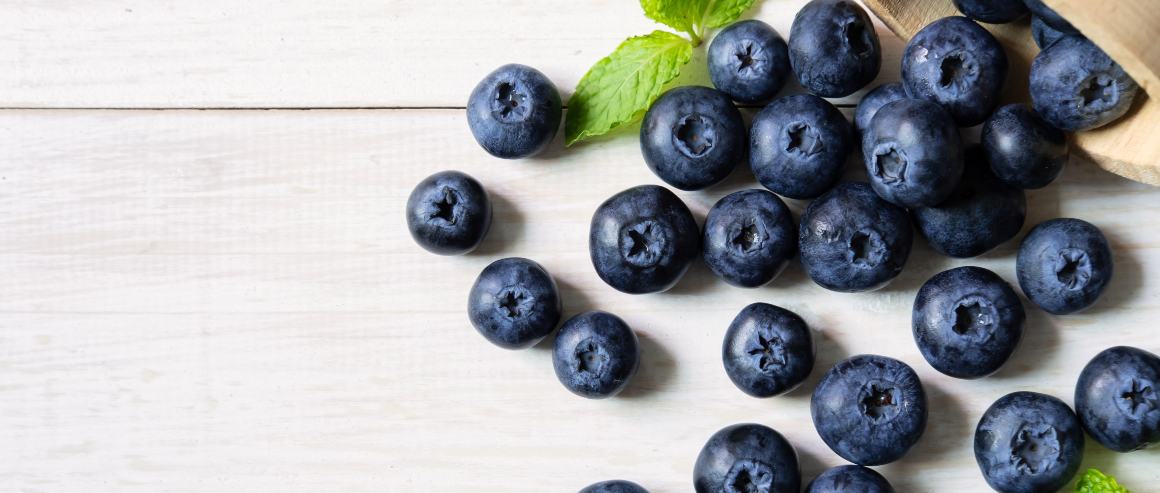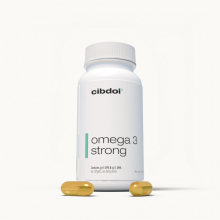Are Blueberries High in Omega-3?
Published:
Blueberries are one of the most antioxidant-rich fruits, packed with health-promoting compounds called anthocyanins that give them their deep blue color. Known for benefits like improving brain function and reducing inflammation, blueberries are regarded as a superfood. But are they also a good source of essential omega-3 fatty acids? Let’s analyze the omega-3 content of blueberries and how to ensure optimal intake.
Contents:
- Overview of Omega-3 Fatty Acids
- Assessing the Omega-3 Content in Blueberries
- Why Blueberries Have Low-Moderate Omega-3s
- Health Benefits Blueberries Provide
- Increasing Omega-3s in Blueberry Dishes
- Top Food Sources of Omega-3
- Should You Take an Omega-3 Supplement?
- Key Takeaways on Blueberries and Omega-3

Overview of Omega-3 Fatty Acids
Omega-3s are a type of polyunsaturated essential fatty acid necessary for human health. There are three main types:
- ALA (Alpha-Linolenic Acid) - found in plants and converts in the body to active EPA and DHA
- EPA (Eicosapentaenoic Acid) - supports heart health and reduces inflammation
- DHA (Docosahexaenoic Acid) - critical for brain function and development
Experts recommend a minimum of 250-500 mg per day of EPA and DHA for adults. However, average intakes fall short of this target.
While fatty fish provide EPA and DHA directly, certain plant foods offer ALA that the body can partially convert to the active forms. Maximizing dietary sources is important.
Assessing the Omega-3 Content in Blueberries
According to the USDA Nutrient Database, one cup (148 grams) of raw blueberries contains:
- Total Fat: 0.5 grams
- ALA (Omega-3): 55 mg
So in a serving of blueberries, you would receive 55 mg of the ALA omega-3 fatty acid, which equates to 5-10% of the daily recommended amount.
Blueberries provide mostly trace amounts of monounsaturated fats and lack the active EPA and DHA forms. But they do contribute a modest amount of omega-3 ALA.
Why Blueberries Have Low-Moderate Omega-3s
There are several reasons why blueberries are not the highest source of omega-3 fats:
- Blueberries are relatively low in overall fat content, providing mostly carbs and micronutrients.
- Omega-3s are found in highest amounts in fatty plant foods like walnuts, chia, flaxseeds and their oils.
- Berries contain polyphenol antioxidants but not significant lipid levels.
- The minimal fats blueberries do contain are mainly monounsaturated, not polyunsaturated omega-3.
However, blueberries do provide small yet meaningful omegas compared to fruits lacking fat, making them a richer source.
Health Benefits Blueberries Provide
While moderate in omega-3 ALA, blueberries remain incredibly healthy due to:
- Antioxidants – Rich in anthocyanin polyphenols that provide antioxidant and anti-inflammatory effects. May protect the brain.
- Vitamin C – One cup provides 24% RDI vitamin C to support immune function and collagen synthesis.
- Manganese – Provides 25% RDI manganese that assists bone formation and metabolism.
- Fiber – Supplies 4 grams of fiber per cup to support digestion and heart health.
Blueberries also contain vitamin K, copper and potassium. They are proven to benefit heart health, cognition, blood sugar control and more.
Increasing Omega-3s in Blueberry Dishes
While blueberries themselves are not stellar sources of omega-3 fats, combining them with certain ingredients markedly boosts the omega-3 content of recipes:
- Blueberry smoothie bowl with chia seeds, flaxseed and walnuts (5,000mg ALA)
- Greek yogurt blueberry parfait with slivered almonds (500mg ALA)
- Blueberry muffins baked with walnut oil (2,500mg ALA per muffin)
- Blueberry pancakes topped with crushed pecans (800mg ALA per serving)
- Frozen blueberry, avocado and banana smoothie (400mg ALA)
- Blueberry oatmeal bake with hemp seed topping (1,000mg ALA per serving)
Using omega-3-rich nuts, seeds, oils and fruits turns blueberry dishes into excellent sources of these essential fatty acids.
Top Food Sources of Omega-3
To meet your daily omega-3 requirements, emphasize these whole food sources offering highest amounts:
ALA Plant Sources:
- Flaxseeds: 7,196 mg per 100 grams
- Chia seeds: 5,060 mg per 100 grams
- Walnuts: 2,570 mg per 100 grams
- Soybeans: 1,241 mg per 100 grams
- Navy beans: 237 mg per 100 grams
- Brussels sprouts: 564 mg per 100 grams
EPA/DHA Seafood Sources:
- Salmon: 4,123 mg per 100 grams
- Anchovies: 951 mg per 100 grams
- Atlantic mackerel: 1,699 mg per 100 grams
- Rainbow trout: 983 mg per 100 grams
- Sardines: 2,205 mg per 100 grams
- Caviar: 1,086 mg per 100 grams
Combine both plant and seafood sources for optimal omega-3 intake.
Should You Take an Omega-3 Supplement?
In addition to food sources, taking an omega-3 supplement like fish, krill or algal oil can help ensure you meet daily EPA/DHA targets if intake from fish is low.
Look for quality third-party tested brands that specifically list amounts of EPA/DHA per dosage on the label.
Key Takeaways on Blueberries and Omega-3
- Blueberries provide 55mg omega-3 ALA per cup, making them a low-moderate source.
- Blueberries are rich in anthocyanin antioxidants but low in total fats.
- Boost blueberries by mixing them with omega-3 rich nuts, seeds, avocados and oils.
- Focus on fatty fish, walnuts, flax and chia for optimal omega-3 intake.
- Supplements can provide preformed EPA/DHA when diet falls short.
In summary, while blueberries themselves are not a prime source of omega-3 fats, they contribute a small amount and can be incorporated into omega-3-rich recipes by pairing them with other healthy ingredients. Enjoy blueberries as part of a balanced diet focused on top omega-3 whole food sources.










